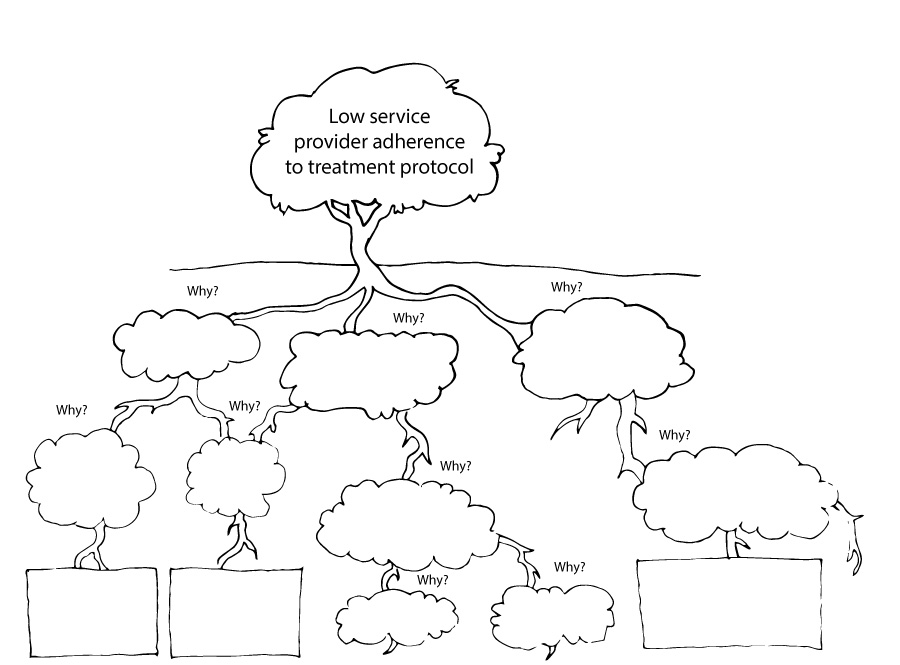FINDING KEY CONSTRAINTS
Formative research should help both prioritize which behaviors to address, and determine likely means of addressing them. The problems might be the three main issues exemplified in this I-Kit: low levels of prompt care seeking for febrile children under 5, low acceptance of and desire for RDT among parents and caregivers of children under 5, or low service provider compliance with national guidelines for case management of malaria. These are examples, and certainly not the only malaria case management issues to be addressed. Regardless of which problems are identified, steps in this I-Kit are applicable.
If there is more than one problem of interest, it is important to make a list of the behavior-related problems and which problems are most pressing (and/or changeable). Obtaining relevant data and literature at this stage is vital as it will help frame the problems in context. Good sources of existing data include national malaria surveys, program reports, peer-reviewed literature, and health management information surveys.

A root cause analysis is a process for identifying the primary source of a given behavioral problem. It is a means of determining why there is a difference between a desired state of health and what is happening now. Conducting a root cause analysis will help move beyond obvious or visible aspects of a problem, and identify the source (root cause). Root cause analyses are done to reflect on a problem by asking "why does this occur", and then continuing to ask why until all apparent causes are exhausted and one final underlying cause emerges. To identify underlying causes, ask:
- What sequence of events leads to the problem?
- What conditions allow the problem to occur?
- What problems co-exist with the central problem and might contribute to it?
There are three sets of vertically aligned boxes below. Each set begins with a box labeled "Delay in Care Seeking for Fever." When clicked, the box beneath this reveals it's cause. The bottom box reveals the root cause. While there maybe more than one root cause for a given behavior, it is important to focus only on those SBCC can address.
How-To Guide Step-by-step guidance on how to conduct a root cause analysis
Only the third set of boxes' root cause is an issue SBCC can address (words for different kinds of fever differ with understanding of fever's origin). In this simplified scenario, after asking "why" a behavior takes place several times, it is possible to narrow the focus of an intervention (and begin planning how to measure changes in focus behaviors). In this example, the root cause analysis could lead programmers to decide to focus messaging on clarifying what fever means in communities with multiple words for different kinds of fever. After determining what behavioral problems to address, sum them up in a series of problem statements that identify what the behavior is, the extent of the problem, where the behavior takes place, and what the target audience is. The behavioral problem for the exercise above could be stated this way:
| Who? | Doing What? | Where? | Extent of the Problem? |
|---|---|---|---|
| Caregivers of children under 5 | Delaying care seeking for fever | X community | 20% below national average |
"Delays in prompt care-seeking behavior in the X community are 20% below the national average among caregivers of children under 5. Delays in care seeking for fever are likely the result of multiple factors, many of which stem from multiple definitions of fever. Local perceptions of the cause of fever differ depending on how high a fever may be and whether chills or convulsions accompany a high temperature. Caregivers of children under 5 in X community will not begin seeking care for fever promptly until they perceive it to be dangerous - and they will not perceive it to be dangerous until they are convinced that their current means of interpreting causes of fever have dangerous consequences."

